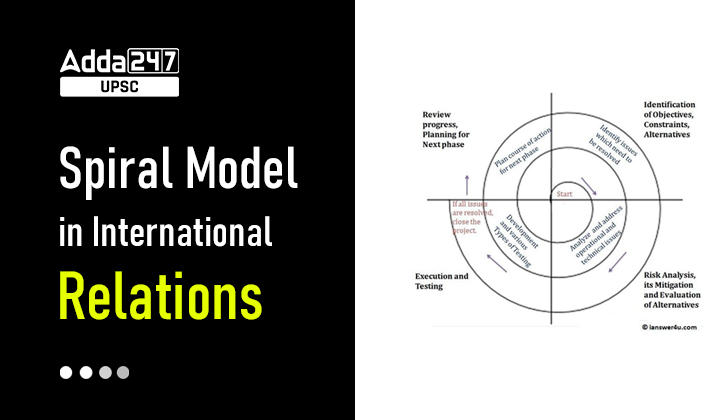Table of Contents
About ”Spiral Model in International Relations”
- Spiral Model in IR is when parties treat each other with matching hostility, sharply escalating an existing conflict. e.g.: The Cuban missile crisis and the current Ukraine war.
- As, besides fears of the existing conflict escalating into a direct Russia-NATO war, there are similarities and dissimilarities between the Cuban missile crisis and the Ukraine war.
”Spiral Model in International Relations”: Why Ukraine War is called a Spiral Model?
- The current phase of the Ukraine war is a textbook example of what international relations theorists call a spiral model, where parties treat each other with matching hostility, sharply escalating an existing conflict.
- Even if there is no desire for a nuclear war on both sides, escalatory spirals could be dangerous, which, if left unchecked, could take their own course.
- Still, there no conscious diplomatic effort to create conditions for talks.
”Spiral Model in International Relations”: Why there are no conscious diplomatic efforts between Russia and the US?
The Normative view of the US
- One way to look at conflicts is to take a moral, normative view of them.
- The mainstream narrative in the U.S. about Mr. Putin matches this view — he is the aggressor, who has violated international laws and norms by invading Ukraine and annexing its territories, and, therefore, Washington would not hold talks with the Kremlin.
-
US itself has no moral qualms
- This normative absolutism is not consistent with the past and present of American foreign policy.
- The U.S. itself has violated UN norms several times in its interventions abroad and it had no moral qualms in recognising its ally Israel’s illegal annexation of Syria’s Golan Heights or recognising the disputed Jerusalem, half of which has been illegally annexed by Israel, as its capital.
The opportunist view of the US
- A more realistic reason for no proper diplomatic efforts from the US is that Washington sees an opportunity in the Ukraine war to weaken Russia by continuing to arm Ukraine.
- As per this narrative, Russian failure in Ukraine could have political consequences, including challenges to Mr. Putin’s hold on power. So, escalation becomes a policy of choice.
Russia sees the U.S. as the main force behind Ukraine
- The Russians, on the other side, see the U.S. as the main force behind Ukraine, before and after the war began.
- As a failure in Ukraine will have both security and political consequences, Mr. Putin cannot afford to make compromises.
- Escalation becomes the way ahead for him as well. This is a dangerous slope.
”Spiral Model in International Relations”: How to break the Spiral?
- Unless the leaders break the spiral, the conflict will keep deteriorating, as was evident in Russia’s recent attacks on Ukraine’s infrastructure and the Ukrainian drone attack in Sevastopol, Crimea.
- To break the spiral, the parties will have to first look beyond their personalist view of the conflict and try to understand the structural conditions which their rivals operate from.
- This would allow the leaders to empathise with their rivals, irrespective of their moral positions (what Realists call strategic empathy), and take difficult decisions to make peace.
”Spiral Model in International Relations”: Conclusion
Kennedy(the then US President) and Khrushchev(the then USSR President) had shown strategic empathy to understand the predicament both leaders were in, and they could make difficult choices. But Mr. Putin and Mr. Biden are in their own silos, blaming each other and blindly pursuing their goals through force, while Ukraine is on fire. The sooner they come out of it, the better for the world.



 TSPSC Group 1 Question Paper 2024, Downl...
TSPSC Group 1 Question Paper 2024, Downl...
 TSPSC Group 1 Answer key 2024 Out, Downl...
TSPSC Group 1 Answer key 2024 Out, Downl...
 UPSC Prelims 2024 Question Paper, Downlo...
UPSC Prelims 2024 Question Paper, Downlo...




